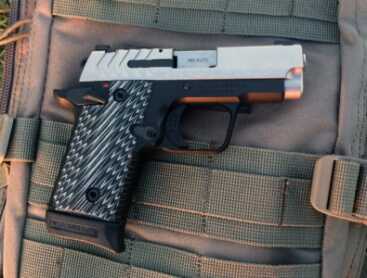
The 911 can go anywhere you do, so it’s always there when you need it.
I was living in Canada the first time I heard gunshots from a murder in progress. As I wrote in the days that followed, Toronto’s residents blamed the police for the death of 18-year-old Gabril Nikov, even though officers arrived within minutes of the shooting. There is no Second Amendment in the Great White North, which means Canadians have only one option in a life-threatening situation: call the police and pray.
My time in Canada gave me an even greater appreciation for the right to protect myself and my family with a firearm. Law enforcement officers do their best to prevent tragedy, but no country’s police force can be everywhere at once. Sometimes, as the tagline goes for Springfield’s new 911, the police are minutes away, the threat is seconds away, and you’re your own first responder—whether you want to be or not.
As more Americans take the truth of this reality to heart, firearms companies have produced dozens of compact and sub-compact handguns perfectly suited for concealment. Many of these manufacturers offer reliable, well-made, and reasonably priced firearms, but I bet I’m not the only one who rolls my eyes when yet another small, black, striker-fired handgun hits the market. I own (and love) one of these guns, but it’s nice when a company engineers something a bit different in the CCL category.
Springfield’s new 911 may look like other sub-compact 1911-style 380s, but it handles better than any I’ve shot. The engineers at Springfield tweaked the mini-1911 design to minimize felt recoil, improve ergonomics, and provide a clearer sight picture even in the most stressful situations. Plus, it’s a great looking gun. The 911 stands out among the crowds of striker-fired handguns, and it won’t fail to deliver in a crisis.
Specifications
Caliber: 380 ACP
Recoil System: Full Length Guide Rod w/ Flat Wire Spring
Sights: Pro-Glo™ Tritium/Luminescent Front & White Outlined Tritium Night Sight Rear
Weight: 12.6 oz
Height: 3.9″
Slide: 416 Black Nitride, Loaded Chamber Indicator
Barrel: 2.7″ 416R Stainless Steel, Black Nitride Finish, 1:16 Twist
Length: 5.5″
Grip Type: G10 Grips
Frame: 7075 T6 Anodized Hard Coat Aluminum, Octo-Grip Texture on Front Strap & Mainspring Housing, Extended Ambi Thumb Safety
Magazines: 1 – 6 Round Flush & 1 – 7 Round Extended, Stainless Steel
MSRP: $599.00
Springfield also offers the 911 with a black slide as well as two models with Viridian green grip lasers. Those are listed at $789 MSRP.
911 vs. Sig P238
The best-known comp to the 911 is probably Sig Sauer’s P238. Browning and Kimber both make similar handguns, but the P238 is the first comparison I considered.
The two handguns are identical in many ways (barrel length, overall length, and height), but the 911 has the Sig beat in several categories. The 911 is 2.6 ounces lighter and almost .2 inches slimmer. These are small differences, but they become more noticeable after carrying the firearm all day. The 911 also comes standard with an extended 7-round magazine, while the P238 usually comes with a 6-round magazine. Price goes to the 911 as well. Depending on which model you choose, Springfield’s handgun will set you back $100-$200 less than Sig’s. Magazines for the 911 will also be $20-$25 less.
In terms of ergonomics, the trigger guard extends farther forward on the 911 and has a small cut-out where the guard meets the grip. Both features allow shooters to use the firearm more easily with winter gloves. The beavertail extends farther to the rear of the gun, which helps control recoil. The 911 also comes standard with G10 grips. Grip texture is a matter of opinion, but I prefer the 911 grips over the P238.
Finally, and I expand on this a bit more below, the trigger on the 911 is lighter and crisper. Sig rates their P238 trigger between 5 and 7 pounds, but Springfield guarantees a 5-pound pull on their G10 trigger. The P238 still comes with an excellent trigger, but I give the slight edge to the 911.
Design Highlights
The 911 copies the external safety and hammer of the traditional 1911 design, which makes it ideal for anyone accustomed to 1911 controls. If you’re used to carrying cocked and locked, you won’t have much trouble adjusting to Springfield’s new offering.
Beyond these two components, however, the 911 departs from John Browning’s original schematics. The 911 doesn’t use a barrel bushing, and the trigger is hinged even though it looks like it copies the 1911’s straight-pull design. Also, as with many 1911-style .380’s, the 911 doesn’t use a backstrap safety. Springfield eliminated this mechanism so users wouldn’t have to worry about maintaining a perfect grip in a self-defense situation. The lack of barrel bushing also makes takedown much simpler: users simply remove the slide stop lever to remove the slide and barrel.

The 911 looks like a 1911, but the internals are much different, as you can tell from the bushing-less barrel/slide design.
The 911 includes a number of features that ensure safe carrying. The thumb safety blocks hammer movement, but as long as the hammer isn’t uncocked, the slide can be manipulated even when the safety is on. The hammer can also be half-cocked to ensure that the hammer won’t engage the firing pin even if the firearm is dropped. Carrying in this manner would require the shooter to disengage the safety and cock the hammer before firing, but it might be an option for those uncomfortable with carrying cocked and locked.
Springfield says its engineers focused on the shooter, not just the .380 cartridge when they designed the 911, and that attention is clear in the three contact points between the shooter and the firearm: the grips, trigger, and sights.
The grips and trigger are both constructed with G10 plastic, a high-pressure thermoset laminate made of multiple layers of woven fiberglass mesh cloth held together with an epoxy resin. It’s basically super tough plastic, and it makes the gun a bit lighter than other pocket pistols. Springfield included grip texture in all the right places (front strap and backstrap, safety lever, trigger, and hammer), but more importantly, they used the right amount of texture. It’s aggressive enough to provide confident handling, but it won’t take off a layer of skin if you use an IWB holster.
The trigger is excellent, despite its deceptive appearance. It weighs a hair above 5 pounds in the model I tested, and the reset is short, crisp, and tactile. The light pull weight combined with the textured shoe allows the shooter to maintain proper form even while attempting rapid follow-up shots.
The grips and trigger are great, but the factory sights set the 911 apart from comparable firearms. The rear sights are white tritium and the front sight is a Pro-Glo™ tritium dot outlined with a yellow luminescent ring. The front and rear sights contrast during daytime shooting, and all three dots glow brightly in the dark. The rear sight is U-shaped rather than square, which helps align more precisely with the circular front dot. The rear notch has been cut in the standard location, but the sight itself extends backward so it rests at the very rear edge of the slide. While an extra quarter inch of sight radius isn’t going to make you noticeably more accurate (especially in a self-defense situation), I thought it was a nice aesthetic touch, and it does remove the rear edge of the slide from your sight picture.

The yellow front sight stands out in all but the darkest conditions, and the rear white dots provide a nice contrast.
.380? Really?
The handgun’s most significant “design feature,” of course, is the caliber. I won’t spend much time arguing for or against 9mm’s little brother, but I will say this. If you’re anything like me, sometimes the discomfort of carrying a 9mm or a .40 tempts you to leave your gun at home. The 911 doesn’t give you that excuse. It’s so small and light, you won’t notice it’s there. The best argument in support of the .380 might be “it’s better than nothing,” but the 911 is tiny enough to count as “nothing” if that’s what you’re limited to carrying, whether from necessity or preference.
SEE ALSO: IS IT ENOUGH GUN? A BEGINNER’S GUIDE TO CARRYING A .380
If you already pack the small arms arsenal of an African country, you might find the 911 useful as a backup gun. Its 7+1 capacity is higher than most revolvers and its stainless-steel barrel and slide won’t rust no matter which sweaty crevice you manage to hide it in.
Function and Performance
None of this matters if the gun doesn’t go bang every time you pull the trigger, and the 911 delivered in each of my test categories.

The firearm comes lubed from the factory, so I pulled it out of the box, loaded a mag, and put it through its paces. Small .380’s often need a 200-round break-in period, but the 911 functioned near-perfectly even without the benefit of an initial clean and oil. I used Sig-Sauer’s 90 grain V-Crown, a jacketed hollow-point bullet designed for self-defense, and Sig’s 100 grain full metal jacket. Both loads performed well in this firearm, and I never experienced any feeding or ignition issues.
I began by putting shots on target at 10 yards, which is the maximum range you’re likely to use this handgun to engage an attacker. I won’t be winning any marksmanship competitions, but from this distance I was pleased with my ability to hit in a 6-inch circle without having any previous experience with the gun.
Next, I moved to the five-yard mark and repeated the process. The 911’s accuracy was excellent with both types of ammunition.
I transitioned from shooting for accuracy to shooting with speed, and the 911 excelled in this category as well. Its diminutive size doesn’t provide much leverage for controlling recoil, but that’s part of the trade-off when using an extra-small handgun. The aggressive grip texture, light trigger, all-metal construction, and extended magazine help accommodate for its size. The contrast between front and rear sights also make quick follow-up shots easier.
Self-defense semi-auto handguns like the 911 should cycle even when the shooter uses a weak, one-handed grip. A user might be forced to shoot with one hand in a self-defense situation, and fatigue or injury might prevent them from taking a firm hold. “Limp-wristing” is also a common problem among new shooters, and there’s nothing more frustrating than trying to teach someone to shoot with a gun that doesn’t cycle.
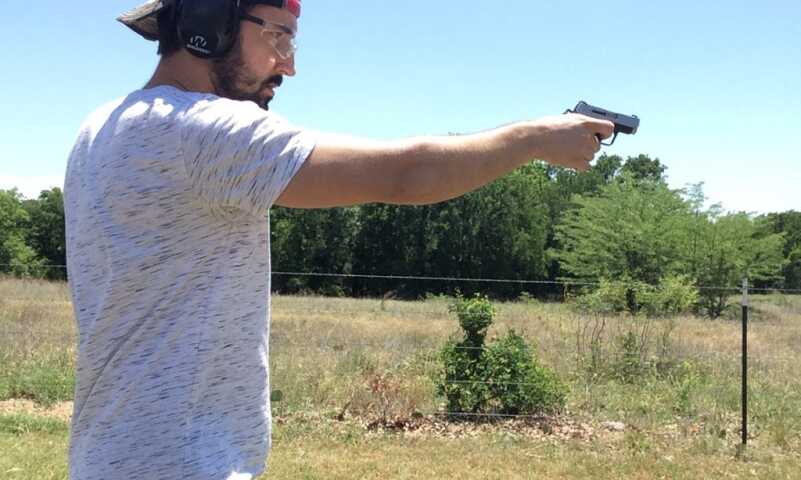
Some small handguns don’t cycle unless the shooter has a firm grip. The 911 isn’t one of those handguns.
Again, the 911 functioned as it should even while I held it loosely with one hand.

Aggressive slide serrations and an extended safety lever would also make the 911 easier to manipulate in a crisis.
Next, I loaded the magazine to full capacity, chambered a round, and added one more to the mag. Handguns have been known to jam when fully loaded because cheap magazine lips sometimes release more than one round at a time under the spring’s pressure. The 911 cycled flawlessly under these conditions.
I shot approximately 300 rounds throughout the course of these tests and only experienced one issue. Sometimes the 911’s slide wouldn’t lock back on the final round. This will likely occur less frequently as the firearm continues to be broken in, but it is an issue that should be addressed before the firearm is carried on a regular basis. If the slide doesn’t lock back in a self-defense situation, a user could lose valuable seconds realizing the problem, inserting a new magazine, and racking the slide.
Still, the 911 never failed to chamber and fire a round, which was more than satisfactory at the range.
My only other critique is that the ambidextrous safety lever sometimes pinched my trigger finger when I flipped it from safe to fire. The ambi safety is a great feature, but the size of the 911 puts my trigger finger high on the frame and in the notch through which the safety travels. Practice would no doubt solve this problem, but it could be a hazard in a self-defense situation.
Conclusion
Even after the 911 performed so well during testing, I was most pleased with my comfort level after firing so many rounds with such a small firearm. Other .380 pocket pistols have left my hands sore after a trip to the range. Shooting the 911 isn’t as comfortable as a full-sized 1911, but it isn’t unpleasant at all. The heavily textured grips allowed me to control muzzle flip and get the Pro-Glo front sight back on target, and the excellent trigger made hitting my target a relatively simple task.
If you’re looking for a micro-pistol that you can carry in deep concealment or a reliable backup gun if the S really HTF, the 911 is a great choice. Plus, you won’t hate shooting with it at the range, which means you’re much more likely to practice if you ever have to be your own first responder.VI
Visit Springfield Armory for more information on the 911 by clicking here.

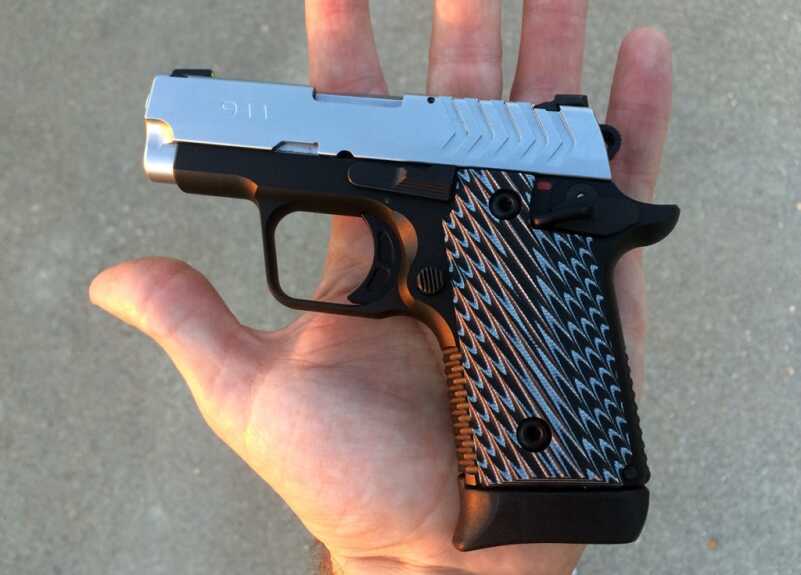
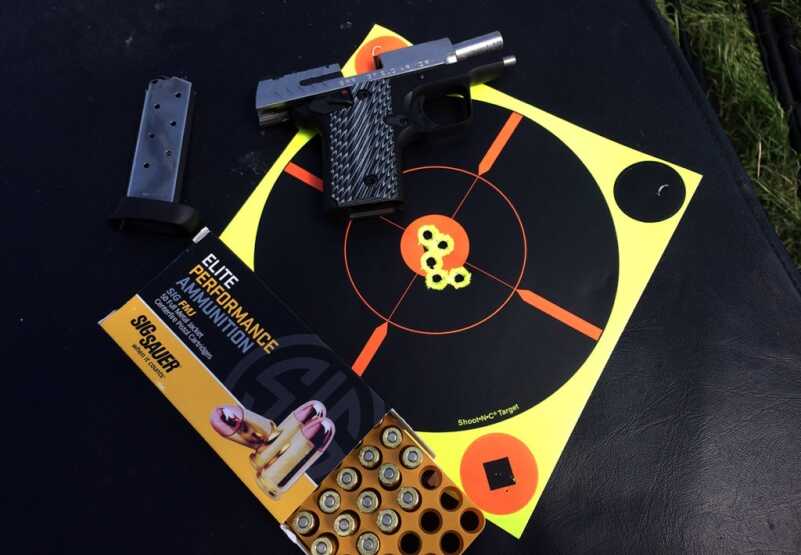
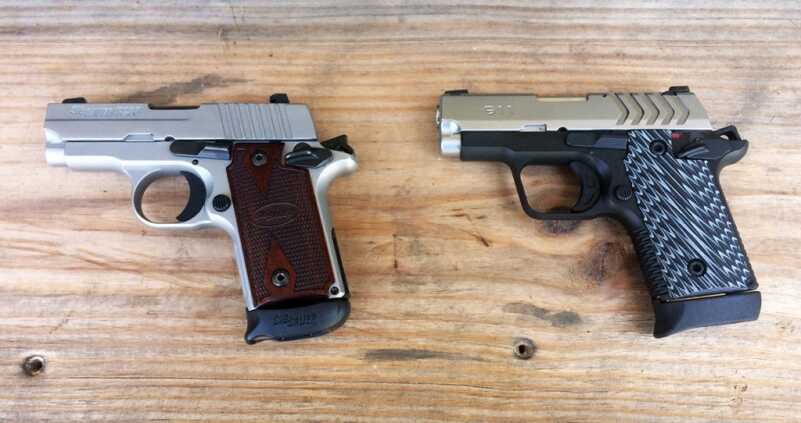

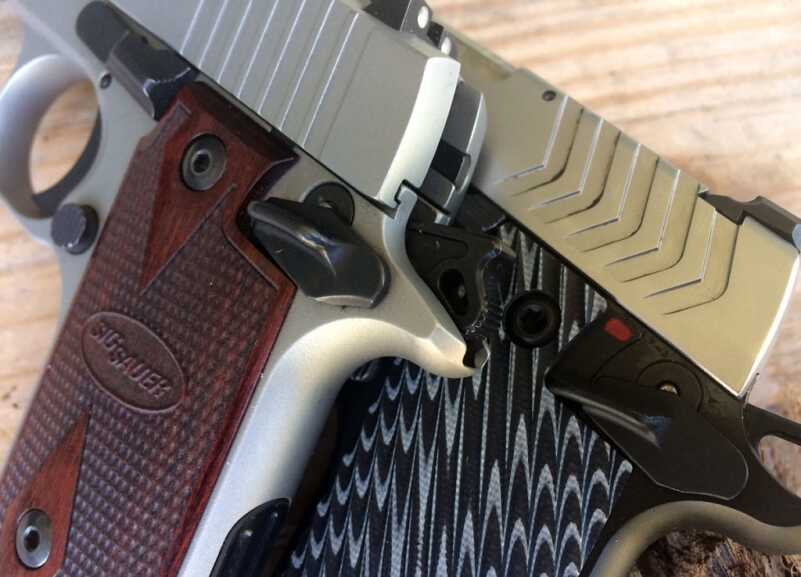
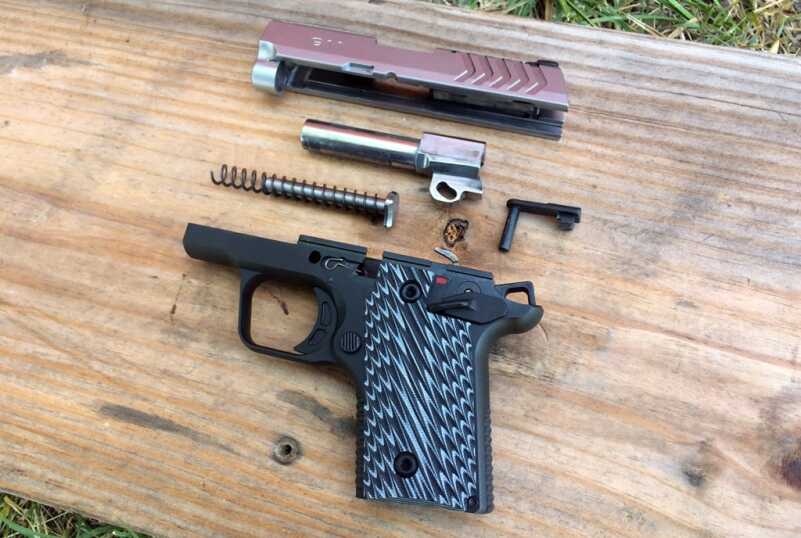


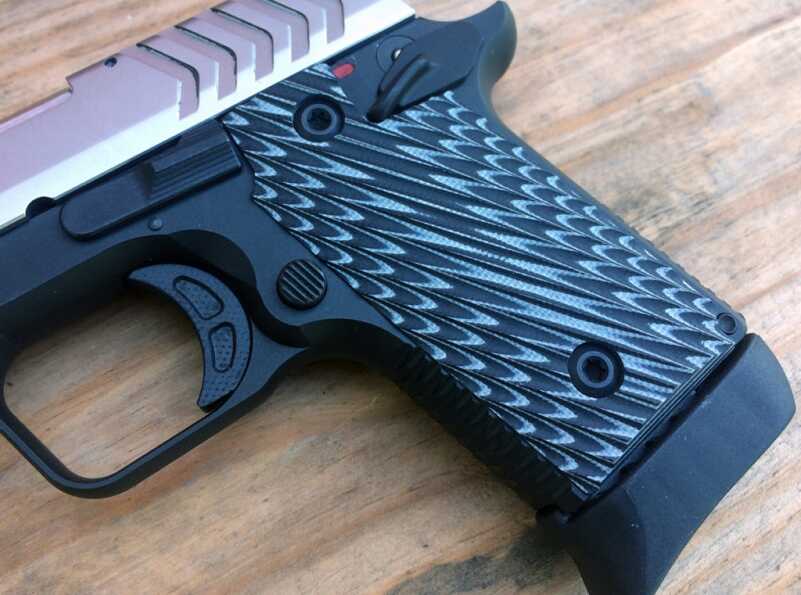

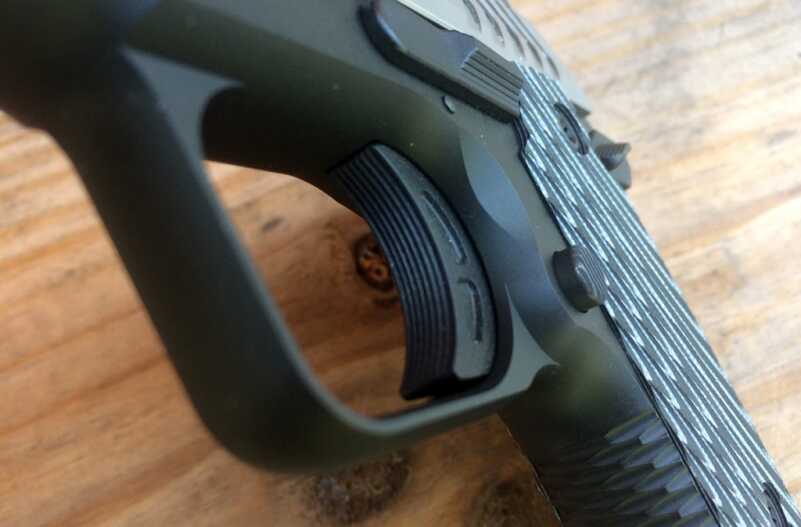
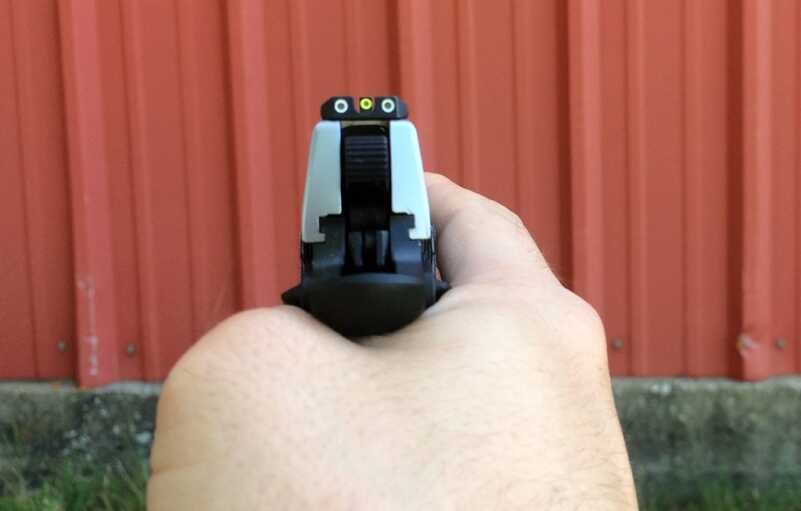


Recently Purchased this SA .380. I was in love with this gun, the feel and the sights were amazing. I chose this over the other models due to the feel and Reviews that I read previously. I took this to the range twice and both times never shot more than three rounds threw it without jamming. I tried two different ammos (Sig Sauer FMJ & Winchester ??) and both clips. It is back at Springfield Armory. I couldn’t get it NOT to jam. Not very happy and I have NO IDEA what their doing with the gun. I sent then an email and all I got was an email telling me to send it back. I have since read about jamming issues after searching for that exact issue. Hoping I just received a LEMON!
I got my 911 two weeks ago as I write this. My experience thus far, FWIW:
Saw a vid just after I got it that complained about functioning issues out of the box due to being a bit dirty from the factory. When they cleaned it up it ran fine for their range test.
Armed with that info, cleaned mine up right away and did notice it was indeed a tad dirty. It had obviously been test-fired at the factory and they had done a half-ass job of cleaning it afterwards.
Took it to the range and put 100 rounds through it. Experienced three FTFs and one light primer strike (all four errant rounds were ultimately cycled through, so I couldn’t blame the ammo).
Called CS at Springfield and they said what I experienced was not that unusual for a new gun of this type. Recommended 200 rounds for break-in and cleaning every 100 rounds.
Cleaned it up good and returned to the range for another 120 rounds. Somewhere in the upper 40s round count, had one light primer strike (also ultimately fired this round). No other problems. So it seems to be getting “broken in”. Also cycled my chosen defensive JHP rounds without issue.
Verdict so far:
As a practical matter, in not-fired-since-last-cleaning condition, I am sure I can count in it for the 8-14 rounds I would fire – maximum – in an actual situation. It ain’t an AK, but it will shoot when required as long as I maintain it properly. An apparent downside to this gun, however, compared with my previous EDC that it replaced (a .38 snubbie), is that unlike the revolver, I can’t take it to the range three or four or five times without cleaning it. It should be cleaned pretty much every time, but I guess that is to be expected from a small gun built to tight tolerances which gets you accuracy, but at the price of more attentive maintenance.
On the positive side, the 911 has excellent ergonomics and sights. Once I got the hang of it, I was shooting much better with it than I ever had with my .38, which I have owned for more than eighteen years, with many hundreds of rounds down the pipe.
It’s not perfect, but it’s a keeper, and I’m pretty happy with it overall.
such a quite little gun that everyone makes ,COLT ,SIG,KIMBER ECT… NOW DO SOMETHING SMART AND MAKE A DOUBLE STACK WITH A HIGH CAP MAG !
It is a 1911 -LOOK LIKE. There is only one that can be call a true 1911. We all know that model. The trigger concerns me in that it appears to be something from a cap gun that I had as a young man. It broke shortly after I received it.Do not care for that cheep look on any of my guns. Just don’t like the looks. If you do go for it.
With the incredible assortment of compact 9mm pistols that are not much bigger than this little gun, I would much rather carry a 9mm with a magazine capacity of 7 rounds plus 1 in the chamber for 8 rounds of a much better cartage. IMHO this is a poor choice for EDC.
Doesn’t Springfield already make the EMP in 9 mm. If you are gonna spend the money might as well bend over and really take it in the shorts. Hell in California the government fucks us in the ass here everyday We bare used to it ..
I gotta move
A pistol without a backstrap safety is not a 1911.
How does the 911 compare with the sig 365?
Sometimes the discomfort of carrying a 9mm or a .40 tempts you to leave your gun at home?
NEVER!
My IWB full size milspec 1911 was a total pain in the waist, or hip to get used to, but now, I can hardly feel the brick is there.
I will admit thinner is better, but it’s just a thinner P238 with nore affordable magazines, but since I found those mustang magazines that fit for cheap, not so much.
And I still have yet to own a gun that “Needs a break in period”, I have two Philippine 1911’s, 9mm and 45 acp, and my P238, and all of them were running like a scalded dog from day one!
Perhaps you clean them too often?
When they start leaving carbon skid marks, it’s time for a wipe down, and once a year-ish a tear down and a detailed scrubbing.
Wouldn’t this compare to the old colt mustang .380
Useless bellypopper.
Sorry but for eight large, for the fancy tosser model, I’ll take two CZ PO7’s in the more manly .40 cal and keep the spare on the nightstand.
bitch , bitch, bitch Im 82 and a former instructor for 30 yrs. when Springfield came out with the 911 I didn’t hesitate I bought one and didn’t bitch about the price. fires good, feels good preforms good. Shut up and shoot or get off my range.
…….. and a crotchety old 82 at that!
Not a real fan of any .380acp, just me but to say you can get brand X for $200.00 we’ll be sure you paid more for your life insurance!
“The 911 stands out among the crowds of striker-fired handguns, and it won’t fail to deliver in a crisis.”
Striker fired? Silly me. I thought it was hammer fired.
Hey, Dennis! You’re right — that’s a bit unclear. I meant that, as a 1911-style handgun, the 911 stands out among the striker-fired options also available for concealed carry.
Ruger LCP2 is 10oz, 6 +1 shot, precocked hammer fired, no safety to disengage or hang up, pull the trigger and BANG for about 800 rounds, and I paid $304, so I guess this 911.380 street price will be $530… way too much unless you have to have a 1911 manual of arms and night sights. I don’t see point of night sights on a CQC (3-15 feet ) weapon.
I have personally seen 2 Ruger LCP’s blow up on a firing range , noone was injured , but …… ( in any case I am glad yours have not ) . Perhaps the second gen version is better , ( And I Love many Ruger model pistols , just not the LCP) And night sights are good ,,,IN the DARK ! , whether it is close range or not . IMO < ESP that close , would you like to HIT on your first shot of self protection, or possibly miss , cuz it was dark & u Didn't have night sights ? ? OR , do you assumeit will always be either A. Daylight , or B. Well lit , when the need arises ???
Pic # 7 shows a close up view of the muzzle. It appears the the bushing less hole in the slide is eccentric vs. a concentric barrel. Maybe it’s the angle the the pic was taken, or maybe it’s another example of Springfield’s erratic quality control. Also, in pic #10, the 911 is referred to as the 238. Doesn’t anybody proof read these articles?
Hey, Marty. Thanks for your comment. This has been fixed.
It took 400 rounds to break in this pistol (Springfield recommends 200 – 400 for every day carry) reliability. 300 rounds solved a failure to return to battery in both The Wife’s and my pistol. Failure to lock back on the last round and a spontaneous return to battery after inserting a fresh magazine from slide lock back was caused by defective geometry of the follower in a 7 round magazine. It didn’t sit high enough in the magazine and the slide lock to would not engage the slide lock notch every time after the last shot. Springfield sent a new one (but wouldn’t tell me who their magazine manufacturer is). Personal note: The trigger on my SiG 238 broke between 7 and 8 pounds. I traded it for the 911 .380 and haven’t looked back (and neither has The Wife). Accuracy of JSI shots at 7 yards is worth mentioning (JSI = Just Shoot it).
Hey, John, This is helpful, thanks for the comment. I found the 911 performed well out of the box with the Sig ammo I used. But you’re right — these small firearms often need a break-in period.
I understand that tight guns in CC style have heavier springs , etc . But , why not just break them in at the factory with some bulk ammo FMJ, then clean them before boxing . This would add to Quality control and deliver a proven product when sold . I mean , if I buy a self protection firearm that isn’t “reliable” until i feed it another $100-$200 of ammo , then my price for such a self defense pistol is now :: Pistol price , Plus Tax , Plus $100-200 MORE on top …. I know shooters will practice with a gun , to see how it shoots . But Jeez . How about including a coupon towards ammo for the break in period ?? Just my 2 cents .
I am surprised that there has not yet been a comment from a reader losing his mind over the price. “$600 for a .380?!?! Don’t you know you can get a Taurus or a Hi Point for $200? Why on earth would anyone spend more than that for a gun? This is overpriced trash!”
Somehow they managed to make the grip look boxier on this Springfield than the grip on the Sig or the Kimber. It makes the gun look less balanced and lithe. It looks more like the 938 than the 238. Maybe it is an optical illusion of the grip? Maybe other grips look better in photos than those black and grey ones?